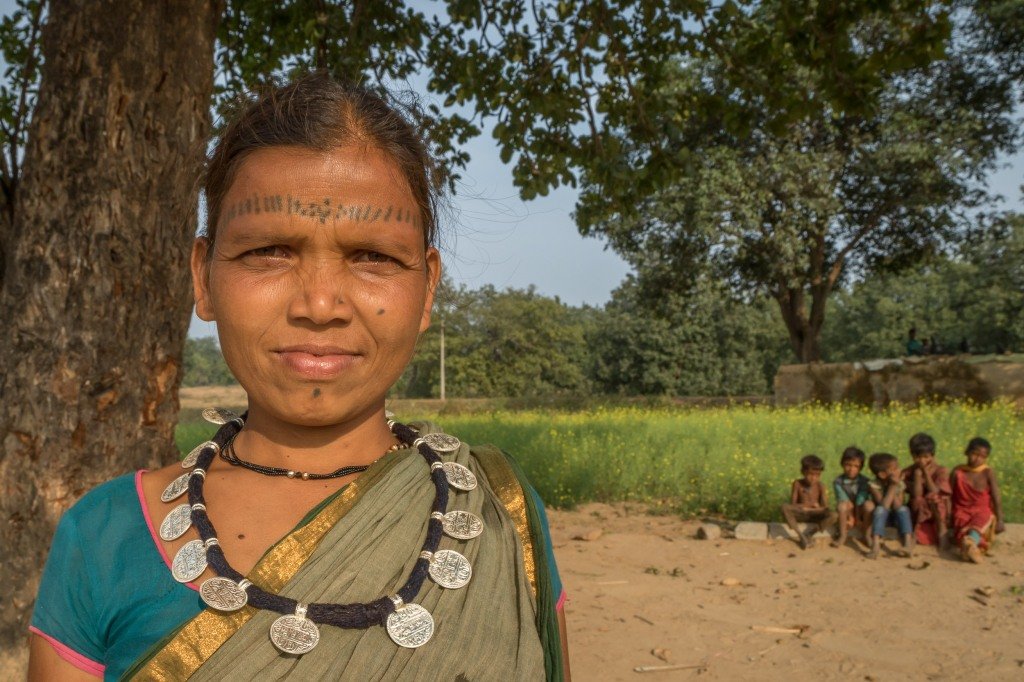In one way or the other, knowingly or unknowingly, as social animals we tend to exercise our intrinsic habit of strengthening our position within the larger community to which we belong.
There is enough evidence across cultures worldwide that highlight mankind’s inclination towards creating visual markers like body piercing and tattoos that collectively narrate the stories of the communities those marked bodies belonged to. With time, the culture of visual markers, especially tattoos, progressed from being interpreted to one that began to serve aesthetic purposes; denoting man made symbols of birth status, branding of certain sections of society and social rank, religious and spiritual emblems, protective charms for love and luck, and much more.
With increasing urbanisation, tattooing has gained popularity amongst urban youth as a form of self-expression. However, often I always used to wonder – is there an indigenous story from India that’s still untold? Little did I know that my quest would take me to discover a goldmine of native tattoo art from the hinterlands of our majestic country!
My close association with Chhattisgarh and interactions with the Baiga tribe in the region sparked an interest, pushing me to deep dive into Godna/Gudna or Godana art (the art of mark making or tattooing as it is known today), that has become synonymous with this indigenous tribe that cuts across the states of Madhya Pradesh and Jharkhand as well. I was fascinated to discover that unlike modern tattooing (which I feel is largely individualistic), tribal tattoos from the region were rooted in collective memory of its inhabitants – origin myths, local religious beliefs, folklore, ancestor worship, representation of the natural environment and more, carrying a lot more value for the one who wear them and hold a shared language and meaning.

Traditionally, Baiga women made elaborate tattoos on their forehead, arms, legs, back, neck and breasts. For Baigas, the Godna are strongly linked with the beauty of their women. They also believe that tattoos are carried into the afterlife because the ink integrates with the body itself. What’s enchanting is to see how the Baigas have interpreted the various elements of nature through this art. For example, they consider the cow’s eye to be beautiful and enigmatic, hence the ‘cow eye’ tattoo is often depicted on the breasts and the back. Patterns of triangular lines depict mountains and a motif of the sun is tattooed in the middle of the chest. Dots, crosses and circles are the other major shapes that are tattooed in a symmetrical manner between larger and thicker lines. The tattoo on the forehead consists of a symbolic moon shape in the middle and geometric lines continuing above the eyebrows – the placement of this tattoo, in particular, is the mark of being a Baiga.

It’s a known fact that the Baigas do not tattoo themselves, but use the services of women, called Badnins, who are essentially tattoo artists, having learnt the art from their mothers and grandmothers. Remarkable isn’t it – how the designs are made entirely from memory or oral history. An ink that is prepared using locally procured items such as ramtila oil and sal gum does the trick! There are a lot of myths and folklore on the origin of the Badnin community. One such folklore narrates the story of creation of the ‘Badi and Badnin’. Lord Indra (the Lord of the universe) was furious with other Gods and refused to shower the earth with rains. Lord Shiva and Parvati got very concerned and requested Naga Baiga and Naga Baigin to persuade Lord Indra to shower rain on earth. Naga Baigin did not possess any ornaments and hence Lord Shiva and Parvati created the Badi and Badnin who were given the task of decorating the body of the Naga Baigin with tattoos, before she could meet Lord Indra!
In recent years, due to human migration, deforestation and enforcement of the Forest Protection Act, a section of the Baiga tribe have moved out of forest lands to live close to small towns and cities. Consequently, the Baiga women who live closer to the cities do not bear the elaborate traditional tattoos. While they still do have tattoos on their forehead, but instead of the lines and patterns on their arms and legs, they have been seen opting for smaller motifs which seemed to have been an influence of the Gond tribe.

At Singinawa, we are committed to preserve indegenous art of the region across its various elements through the Kanha Museum of Life and Art. Existing within the estate, this 1,000 square foot museum sings an epic of the native Gond and Baiga artisans and their labors of love. In the year 2016, we began our journey of working in tandem with artists who are attempting to keep alive the dying Godna tattoo art through the medium of paintings. One such artist is Mangala Bai Marawi (daughter of Shanti Devi) who is on a mission to preserve the metaphorical and intricate patterns of Godna, by bringing out the beauty of its numerous forms through her art on canvas. It’s indeed a sight to see. The configuration of Godna patterns on canvas stretched across like a painting lends it a contemporary look and feel, almost in the form of a constructivist art piece.

Personally, I feel that this art will see a wider ray of light in times ahead. The interests being shown by tribal women who are committed to improvise the art form by painting ‘Godna’ on fabrics, silk, canvas, wall and doors and various other means, instead of just body painting speaks volume.
Indeed, an array of artists are predicting this art’s future by CREATING IT!!!
Tulika Kedia
MD, Singinawa Jungle Lodge


